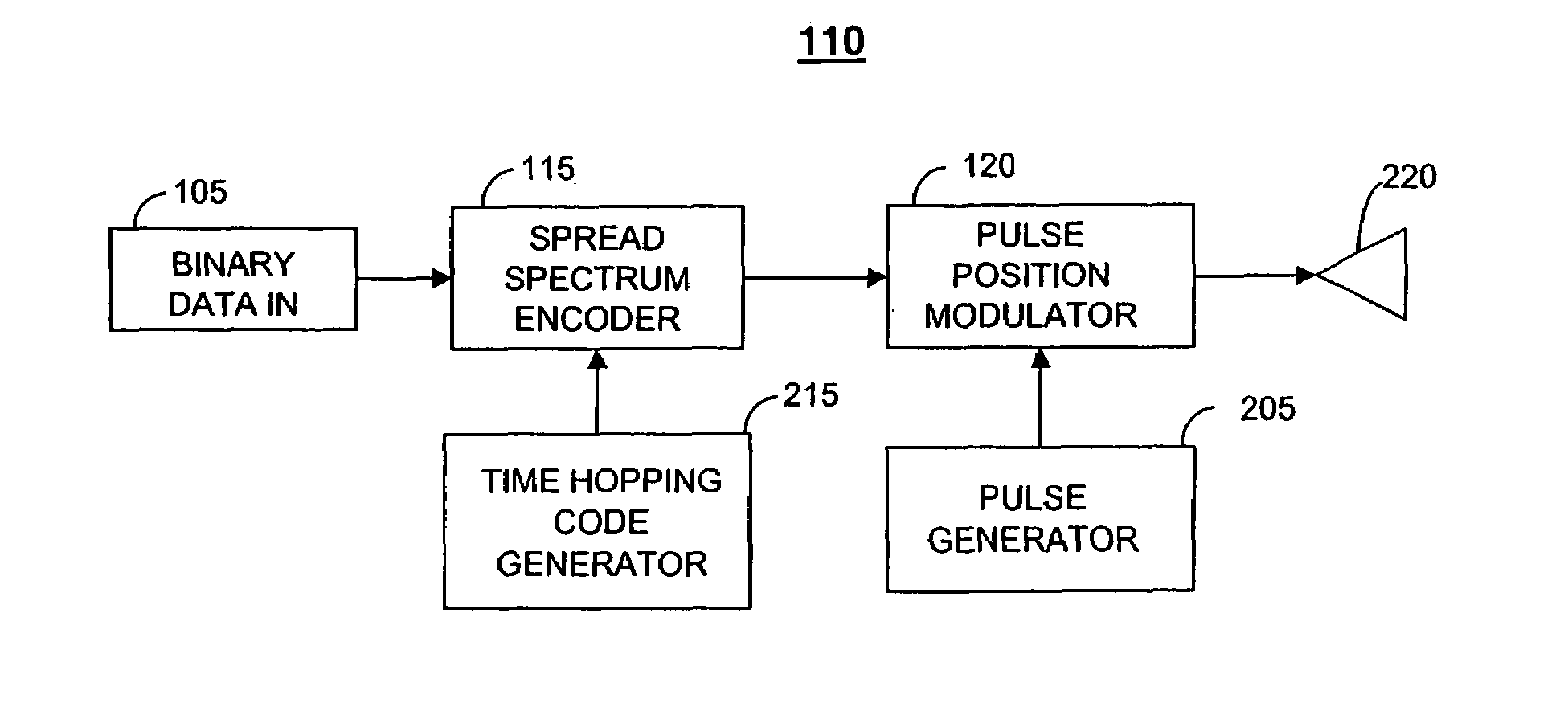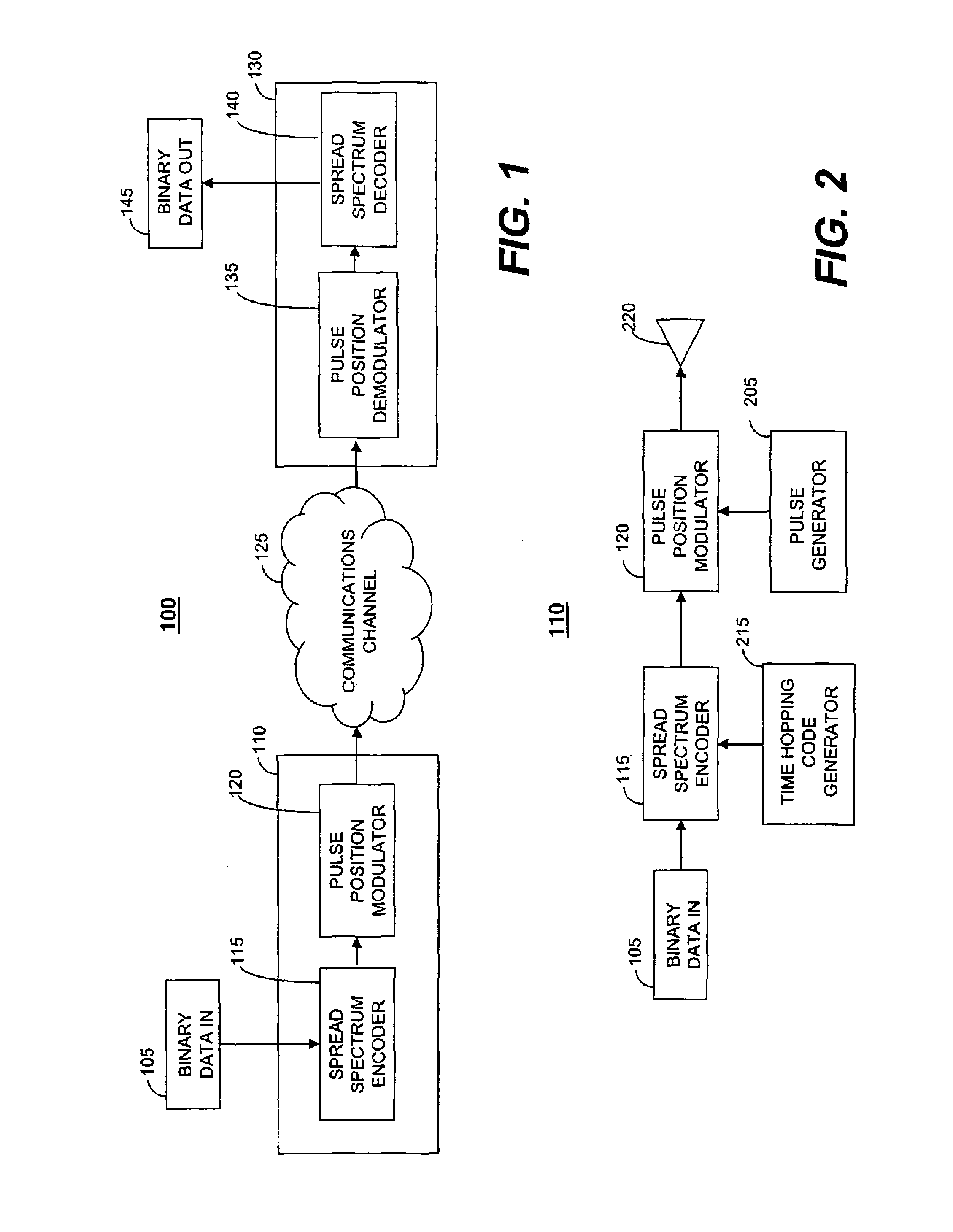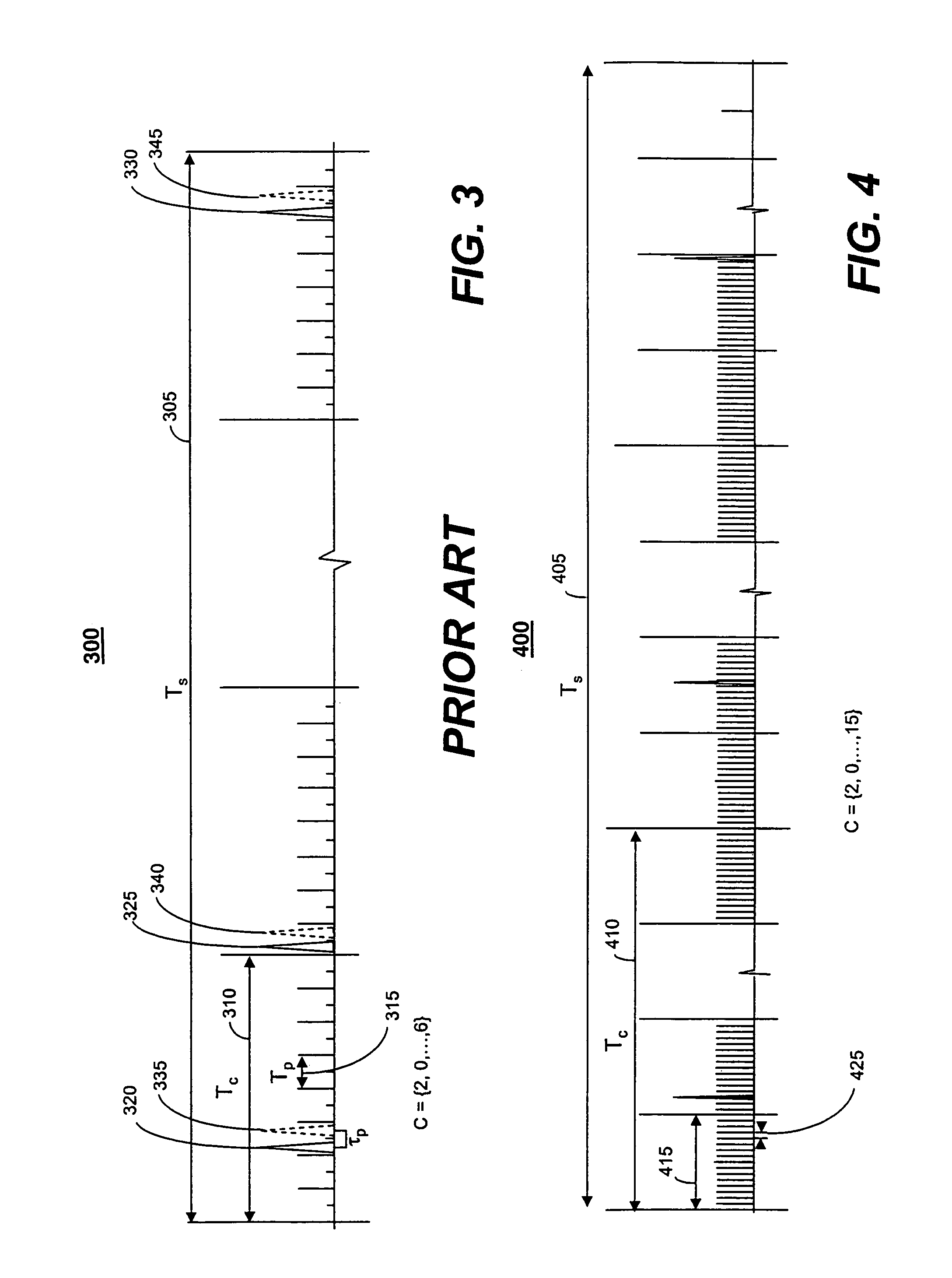Variable spacing pulse position modulation for ultra-wideband communication links
a technology of ultra-wideband communication and variable spacing, applied in pulse position modulation, pulse technique, digital transmission, etc., can solve the problems of reducing the polarization of the received signal, unable to achieve the optimal performance of binary antipodal signaling, and difficulty in demodulating and decoding signals, so as to reduce the risk of inter-pulse interference, maximize pulse separation, and increase throughput
- Summary
- Abstract
- Description
- Claims
- Application Information
AI Technical Summary
Benefits of technology
Problems solved by technology
Method used
Image
Examples
Embodiment Construction
[0018]The present invention is typically embodied in a communications scheme for modulating ultra-wideband (UWB) signals. The present invention is a new modulation technique, called Variable Spacing Pulse Position Modulation (VSPPM), which reduces the risk of inter-pulse interference and guarantees high spectrum efficiency. The VSPPM scheme maximizes the average separation between modulated pulses to achieve greater resistance to large delay spreads. In addition, VSPPM randomizes the time offset between adjacent pulses to provide greater immunity to multiple access interference. As a result, the bandwidth efficiency of UWB communications systems is increased.
[0019]The VSPPM scheme can be used to mitigate the effects of channel dispersion in traditional time-hopped code division multiple access systems (TH-CDMA). In a typical TH-CDMA system using conventional pulse position modulation (PPM), the modulated pulse “hops” over a set of Np positions within each chip of the transmitted sym...
PUM
 Login to View More
Login to View More Abstract
Description
Claims
Application Information
 Login to View More
Login to View More - R&D
- Intellectual Property
- Life Sciences
- Materials
- Tech Scout
- Unparalleled Data Quality
- Higher Quality Content
- 60% Fewer Hallucinations
Browse by: Latest US Patents, China's latest patents, Technical Efficacy Thesaurus, Application Domain, Technology Topic, Popular Technical Reports.
© 2025 PatSnap. All rights reserved.Legal|Privacy policy|Modern Slavery Act Transparency Statement|Sitemap|About US| Contact US: help@patsnap.com



